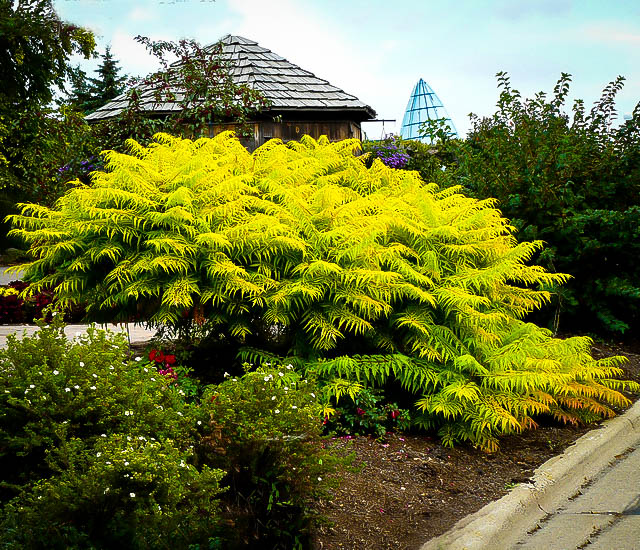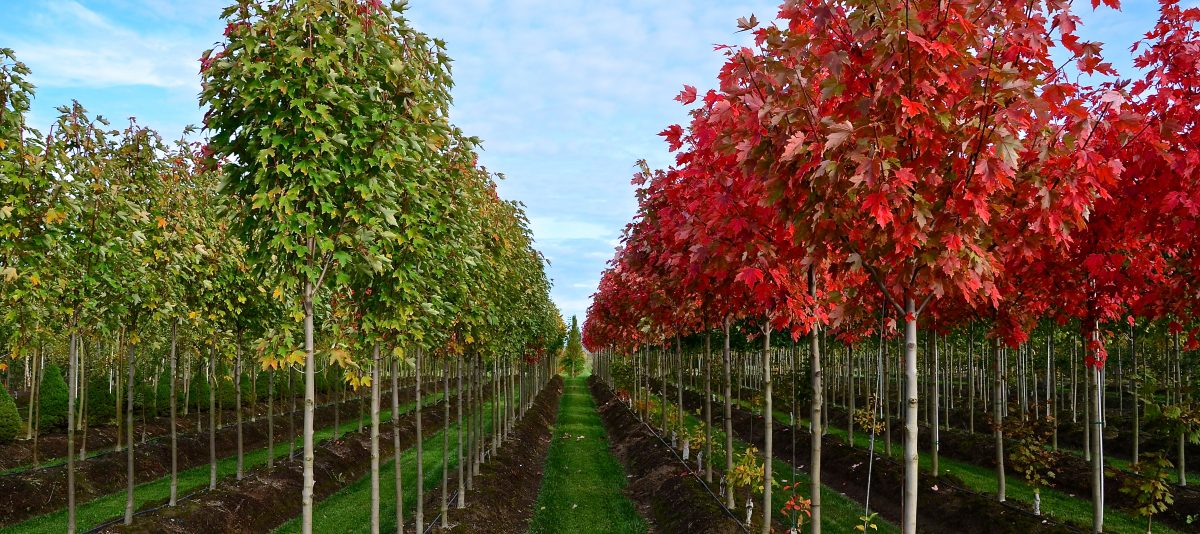Staghorn Sumac
Rhus typhina selections

Sumac. Is it a tree or a shrub? Or is it a weed? It likely depends on where you find it, and which species it is. This often-overlooked plant has amazing possibilities. It is tough, small, beautiful, drought tolerant, tenacious, and easy to grow. It is one of those species that, in the right place,can be the perfect specimen of a small tree. It can be a nuisance, however, if its growth habits are not considered before placing in a landscape.
There are at least 250 species of Rhus–way too many to discuss here. The most common one I am familiar with and have used is staghorn sumac, (Rhus typhina). Staghorn sumac is a small dioecious tree up to about 25 feet tall. It can be grown as a single trunk or multi-stem tree. A striking identifying feature is the large upright clusters of fuzzy dark red fruit panicles which appear on the female plants.The youngest broadly forked branches are covered with furry rust-colored hair, evoking the look of a stag’s horns. It has large fern-like compound leaves with spectacular red fall color. Clusters of small, greenish white summer flowers, attracting bees and other pollinating insects, stand upright in tall, thick, tight spires.
Laceleaf staghorn sumac, (Rhus typhina ‘Laciniata’) is an especially beautiful cultivar with finely divided leaflets. One of my favorite cultivars is the spectacular Tiger Eyes™ (R. typhina ‘Bailtiger’ PPAF), derived from the laceleaf cultivar. Tiger Eyes™ has light yellowish-green and highly dissected leaves that quickly change to yellow, in nice contrast to its rosy-pink leaf stems. It is especially dramatic when the leaves begin to turn scarlet in the fall. This cultivar is distinctly smaller than the species and the laceleaf forms, maturing between six and eight feet tall.
It is important to understand the growth habit of this spectacular plant before placing it in the landscape. While it may spread by seed, it spreads most aggressively through root rhizomes, eventually forming a grove. This can be an advantage in that older large trunks can be removed, with smaller newer trunks taking their place – an option for managing size not readily achieved with most tree species. The colonizing root system is a strong attribute for planting on large, sloped areas, but mechanical control is needed in more restricted planting areas. Root barriers placed at planter or sidewalk edges can help contain its spread. Staghorn sumac is well suited for providing a sustainable small tree option in small locations where tree planting is needed or desired. However, they are not generally good candidates as street trees, due to their somewhat brittle branches and thin bark that can be easily wounded.
Staghorn sumac can be an excellent small tree in some of the toughest locations in urban areas. They are very drought tolerant, easy to transplant, and thrive under the most difficult of locations including poor soils. They prefer the sun, will tolerate shade but are most spectacular in the fall when grown with more sun exposure.
If you are looking for a rugged plant to help cover and anchor slopes that is small, then consider these options to Rhus typhina selections, first, the fragrant sumac (Rhus aromatica) which grows two to six feet tall, and its two to three-foot-tall cultivar ‘Gro-Low’. The latter provides quick cover for slopes with broad spreading horizontal stems that root where they contact the
soil. Keep all of these sumacs in mind when you are faced with any of those challenging planting sites.
Jim Barborinas
ISA Certified Arborist #0135
ASCA Registered Consulting Arborist #356
Certified Tree Risk Assessor #PNW-0327
